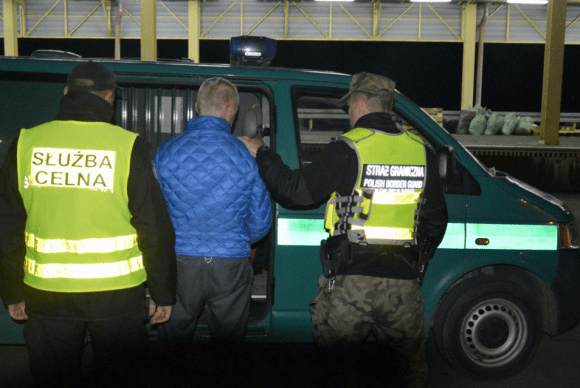NATO Eastern Pivot. “Hard” Capabilities Needed [Commentary]
NATO Ministers of Defence decided to amplify the NATO presence on its eastern flank. The detailed arrangements will be a subject to be discussed, however one of the assumptions is that a coherent reaction shall be ensured, should any of the member states be attacked. The decisions to be made, even if they constitute a relevant step in a right direction, still are not enough to maintain security in the Central-Eastern European region.
NATO Secretary General, Jens Stoltenberg, noted that the expanded NATO presence in Eastern Europe shall have a “multinational” profile, which would ensure that any attack against one of the member states is interpreted as an attack on NATO as a whole, and thus, a proper response would be generated. What is more, the above reinforcement shall be supported by a series of exercises and relevant solutions within the scope of logistics and infrastructure, making it possible to rapidly deploy the required equipment and facilitate quick reinforcement of the forces stationed in the region.
However, the details pertaining the scope of presence are unknown at the moment. We do know though, that it is going to have a rotational profile. It is relevant that the declaration pertaining the process of fusing the presence with the system used for reception of support has been made. The above means that the reinforcement constitutes a part of the NATO collective defence architecture. Up until now, the elements involved in the rotational exercises, at least majority of those elements, were not capable of carrying out combat operations on their own. The units involved in the operations had a size of a company – ca. 200 troops each. Provision of training was their primary task. The above means that the arrangements made by the NATO ministers of defence constitute a qualitative change, if one compared the new appearance of the scheme with its previous status. Moreover, some emphasis shall be placed on continued expansion of the system used to accommodate the reinforcement, which is tantamount to further improvement of the “regional” defensive capabilities.
Obviously, the military staff work pertaining the details is still ahead of us, however the decision according to which NATO is going to maintain permanent presence on the Eastern Flank has already been made. (...) One thing is certain - here I mean that, within the territory of Poland, permanent rotational presence of NATO and US military units, both within the scope of exercises, as well as within the dimension of combat readiness, shall be maintained. This is the direction of our works for the upcoming time.
Antoni Macierewicz, Polish Defence Minister also noted that combat readiness of the rotational units is as important as the exercises are. At the moment, no information is known regarding the structure and composition of the aforementioned units. However, it is quite possible that the exercises, as well as the process in which the collective readiness is maintained, are going to involve the US Army armoured elements, since the scope of rotational activity to be undertaken by those units has been significantly expanded in the US plans related to the fiscal year 2017. There are many symptoms suggesting that a full armoured brigade, normally stationed in the US, is going to be deployed in Europe continuously. This unit would use the equipment deployed and stored in Europe. Equipment package for one more unit of this size would also be stored in Europe.
On the other hand, The Telegraph noted, quoting The Wall Street Journal, that deploying several battalion sized (ca. 1000 soldiers) units in the Baltic Republics is being considered. The above referred both to the Baltic states, as well as Poland. The British outlet also mentioned support for those units, provided by helicopters or air defence elements. It is also important to continue the expansion of the capabilities to accommodate the reinforcement forces. This enhances the NATO defensive capacity in the region in general terms. Here it is worth to ask a question – what forces would be needed by NATO, in order to prevent the aggression against the Central Eastern European states?
US-based RAND think-tank has carried out a research recently, ordered by the United States Under Secretary of the Army, pertaining a potential, hypothetical defensive operation in the Baltic region. Here, a confrontation with the forces of the Russia Western Military District was assumed as the most probable scenario. Baltic republics would have to counteract. When the mobilization model of the Russian Army was defined, the Ukrainian context was taken into account, especially within the scope of rapid creation of artillery battalion battle groups, based on brigades. On the other hand, the armed forces of the Baltic states were supported by light NATO land elements, single motorized infantry battalion using the Stryker APCs, along with the air force and army aviation units (including the attack helicopters).
It was assumed that Russia would attack Estonia or Latvia, while the NATO forces would deploy a week before the operations start. Only some light elements were deployed (airborne and similar units, along with the army aviation component). Despite the support received from several NATO battalions, the Baltic States, in the simulated scenario, did not withstand the pressure of the Russian forces. Within 60 hours the enemy was able to reach the capital cities of Latvia and Estonia. The questions related to defensive operations pertaining Tallinn and Riga were left unanswered. However, it was noted that even though the well-trained airborne units could be used effectively against the heavy elements in the urbanized areas, such plan would result in a risk of collateral damage.
The main factor which led to the Russian victory stemmed from the overwhelming advantage of the armoured and mechanized units, supported by strong artillery elements and air force, going through the gap in the air defence system of the NATO forces, consisting mainly of VSHORAD systems. The authors of the report noted that deploying a single armoured U.S. Army brigade, or carrying out a counter-attack with the use of two heavy elements of this type, would also turn out to be ineffective, as these units would have to face the resistance on the part of the Russian aviation and artillery.
The conclusion of the report states that in order to achieve satisfactory level of combat capabilities, allowing the NATO forces to withstand the initial strike and introduce the main force into combat safely, it would be required to have seven NATO brigades deployed within the region, coming from the states not belonging to the Baltic basin, including three armoured elements supported by the artillery, logistic units or air defence elements, and, of course, NATO air forces and navies. Armoured units played the key role in the area of operations, due to the difficulties related to deployment of those units and structural cuts limiting the availability of such forces in Europe (the pool of 7 brigades includes the airborne units that may be easily deployed, from the locations where they are permanently stationed).
RAND analysis indicates that insignificant reinforcement of the NATO presence may not turn out to be sufficient, in order to effectively protect the Baltic states. Currently, conventional full scale aggression, involving cyber- and information-warfare, seems to be the greatest threat for the NATO allliance. Hybrid warfare, such as the steps seen in the Crimean Peninsula, would allow NATO to react, e.g. through deployment of more units to the countries that would be endangered. Awareness related to the “hybrid threats” has been expanded, in comparison with the status present just a few years back. And the above refers both to the Baltic states, as well as the US.
In order to achieve a proper scope of collective defence capabilities, reinforcement of the conventional NATO potential is desirable, especially in the areas that have been neglected so far. RAND analysts confirmed the thesis, according to which the SHORAD units or artillery have a key value in this type of scenario. Closing the capability gap within those areas is required to increase the effectiveness of collective defence, since the potential adversary may use anti-access strategy, cutting off the intervention force. This would be complemented with using the weaponry in a way that would maximally hamper the allied operations. Using the long range artillery against the land forces or deployment of the S-400 SAMs in the area of operations constitute prime examples of the steps described above.
Decisive steps towards modernization of the conventional capabilities would be the factor which will increase the NATO’s collective defence capabilities. Here we mean the European states, since the United States Armed Forces, besides the “gaps” defined in SHORAD and electronic warfare areas, are capable to operate within an environment featuring a full spectrum of threats. Armies of the Western Europe have significantly limited the scope within which rocket artillery is employed, which hampers the ability to attack area targets. This is also caused by withdrawal of the cluster munitions. The western European states also have practically no land-based ballistic missiles (with a range exceeding 100 kilometres) at their disposal. A similar situation may also be seen within the scope of number of the ATGMs in the inventory of the infantry. Ability to recover the capabilities of the armoured units is yet another burning issue. And it is the Europeans who bear most of the responsibility.
The political decision, according to which the Central European states are going to accommodate more forces, being a part of the collective defence system, connected with the system making it possible to accommodate additional support, constitutes a major step in the process of developing the security, on the NATO Eastern Flank. The specific nature of the environment of the Baltic region, including the steps that would be taken to counteract the A2/AD activities, requires more significant moves that would be directed towards general improvement of the NATO defensive capabilities, with a particular emphasis placed on the states in the region and the developed countries of the Western Europe. So far, Germany or the United Kingdom have both declared that they are going to increase the defence expenditure. However, the aforementioned increase is focused on the existing units, rather than on creation of new ones.
Of course, conventional modernization will not replace cyber-defence, reconnaissance and counter-terrorism units. This means that the European states must increase their military budgets significantly, so that they are capable to react to the full spectrum of threats. Potential adversary may use a combination of measures which would maximize the results, undermining the whole alliance. E.g. mechanized units or artillery may be supported by a cyber-attack, also against the states located in the direct neighbourhood of the area of operations.
Scope and way in which the alliance is going to maintain its presence in Central-Eastern Europe, as well as persistence of that presence, is yet another issue. Defensive system shall be effective, providing capabilities of acting against a decisive, sudden armed aggression in the region. Reinforcements should also be taken into account here – this is obvious – however the main condition is that abilities to rapidly deploy the units are available (e.g. thanks to the fact that the equipment is stored in Europe). Proper recognition of threats is equally important. The detailed decisions regarding the NATO presence are yet to be made. Their shape is going to be influenced by the general shape of the NATO defensive capabilities, which shall be improved within a scope wider than the one seen currently.
Political risk, resulting from the rotational profile of the presence, shall also be taken into the equation. Should any negative changes happen within the political context (in Europe and in the United States), the decisions made by the Ministers of Defence may be cancelled. Despite all of the restrictions above, decisions taken during the yesterday’s meeting of the Ministers of Defence shall be assessed positively. These restrictions are one of the steps of a long process, in which NATO is going to reinforce its defensive capabilities in Central Eastern Europe. Nonetheless, these steps must be complemented by complex actions undertaken by the member states, so that the political decisions regarding creation of the collective defence, within the scope of the presence in the area of operations, as well as the reinforcement, are complemented with “hard” military capabilities.




